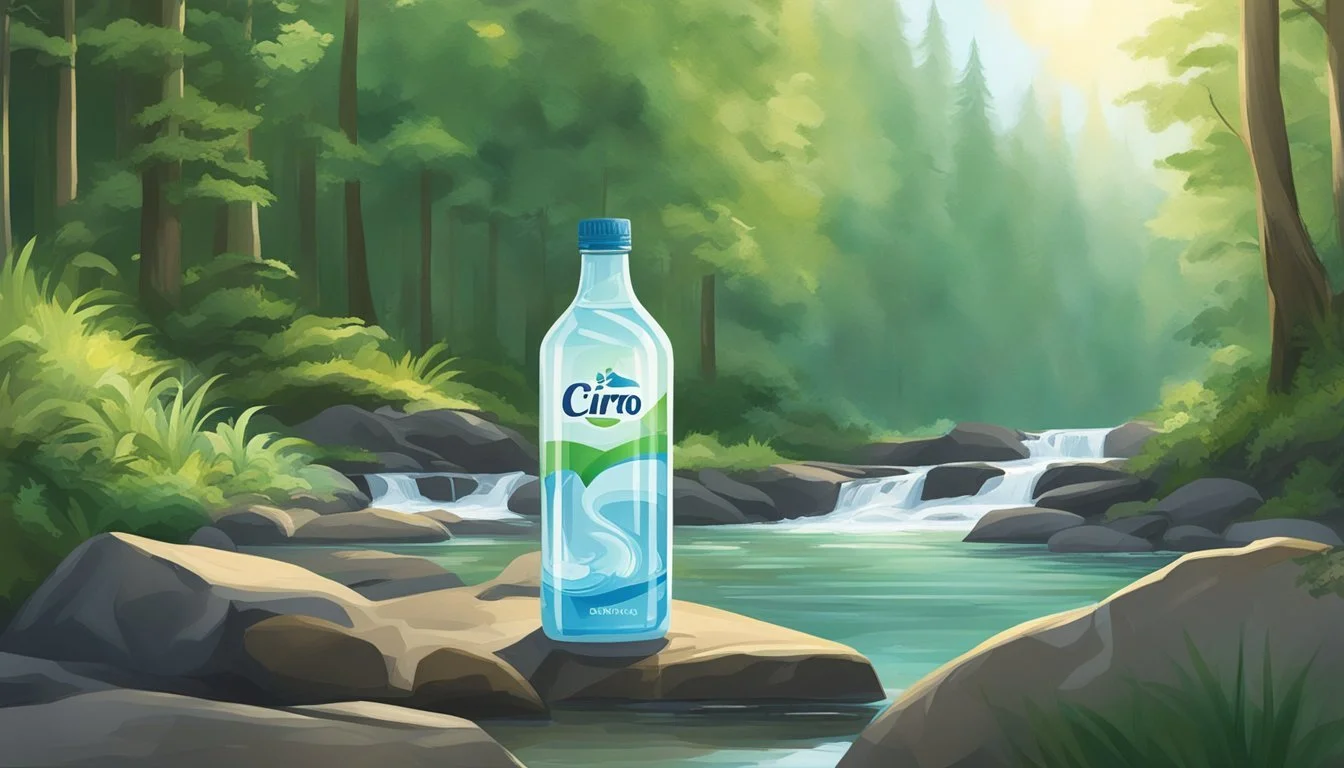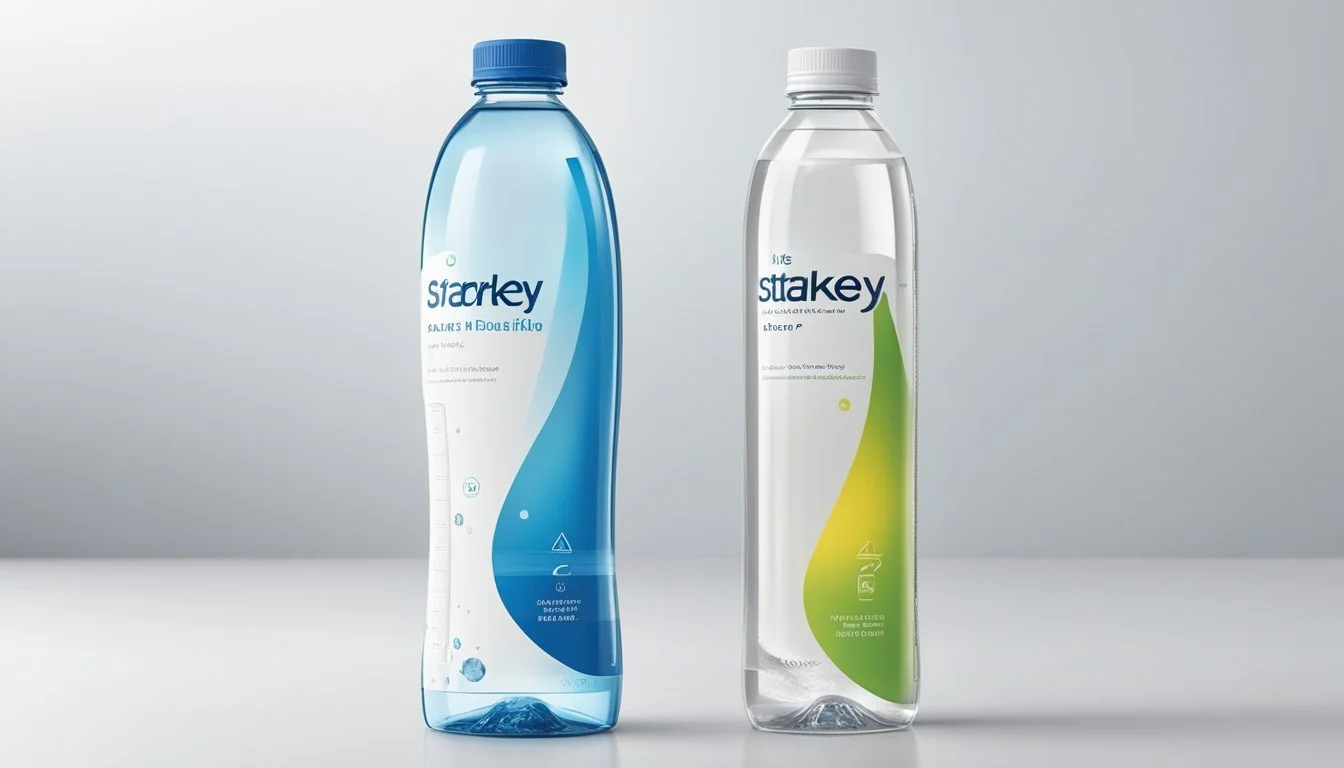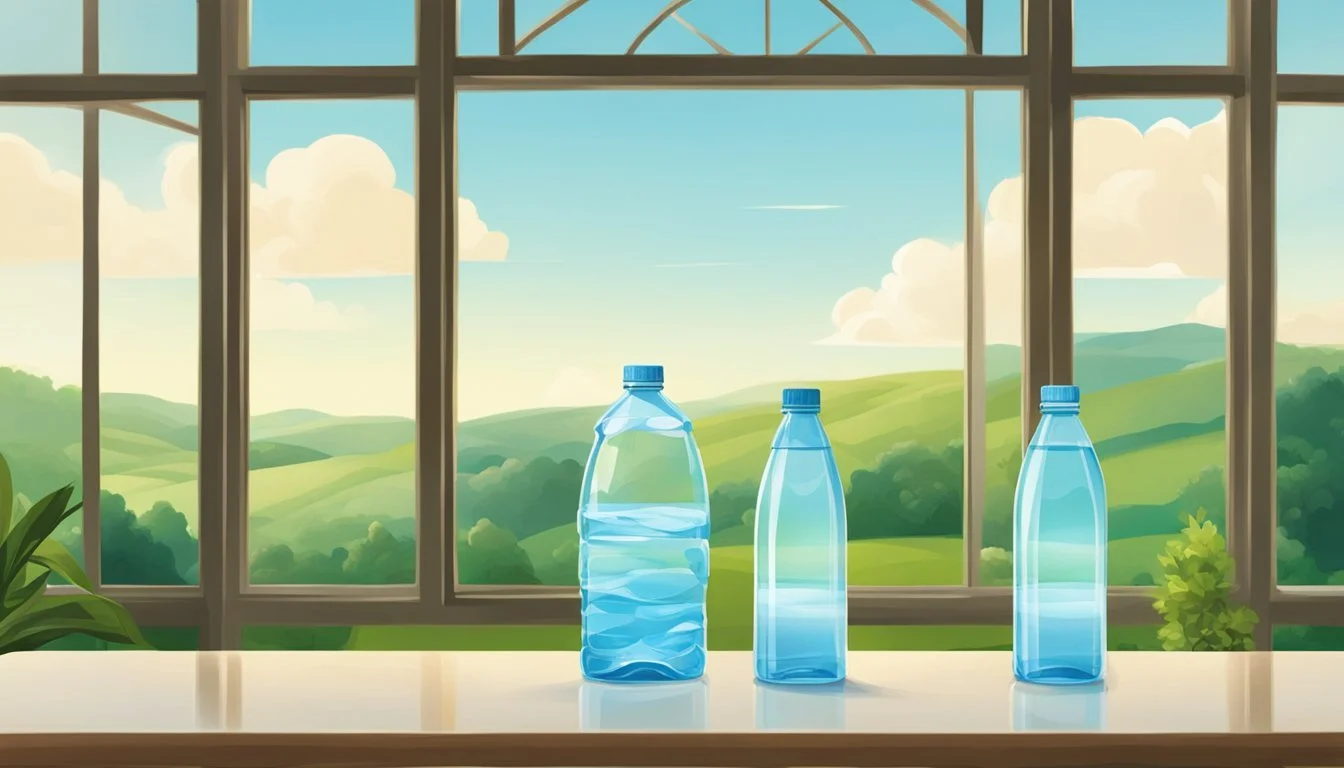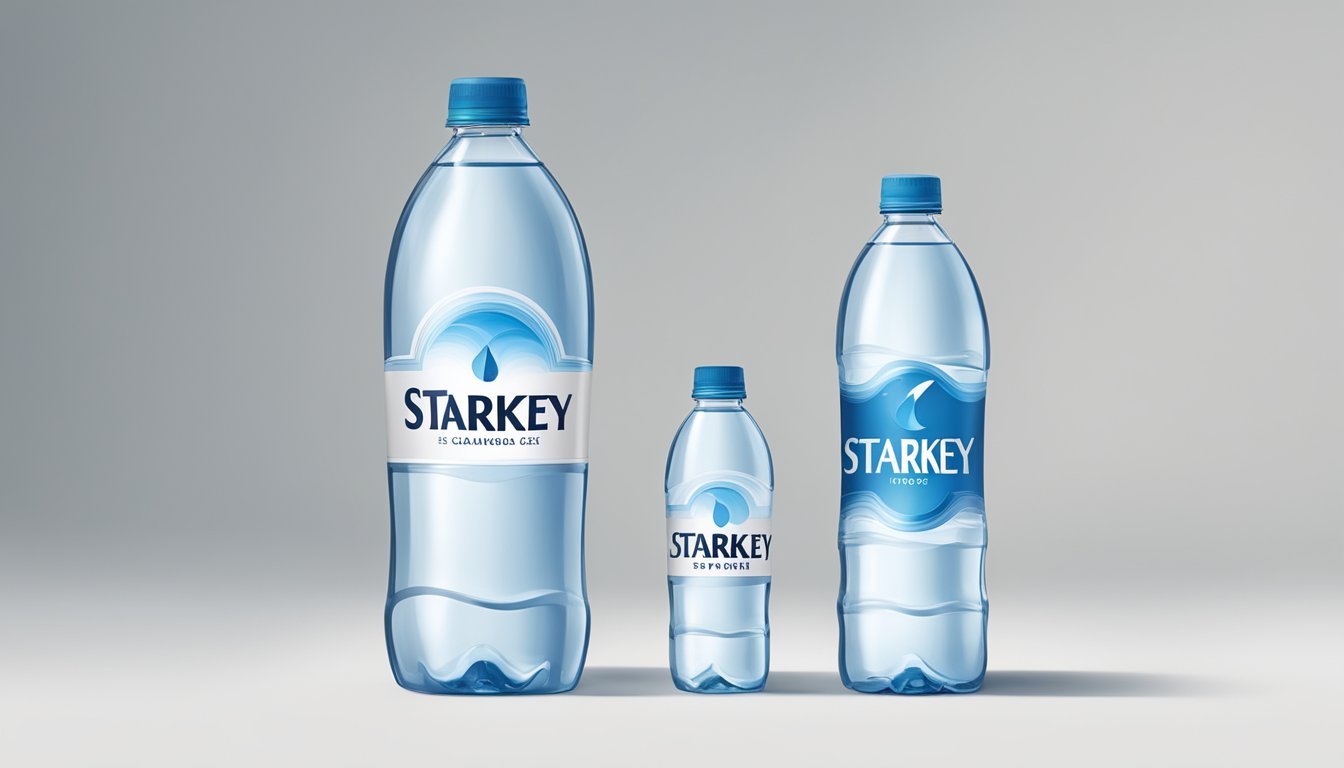Starkey vs. Cirro
Which Bottled Water is Better? Comparison Guide
For those navigating the crowded world of bottled water, the choice between Starkey and Cirro can seem particularly daunting. Starkey water, sourced from a deep volcanic spring in Idaho, promises a natural, mineral-rich drink that some tout for its potential health benefits. Cirro, on the other hand, aims to deliver pure, clean hydration with its commitment to rigorous filtration processes.
If you're looking for a bottled water that combines natural mineral content with a distinguished taste, Starkey might be your go-to choice. For consumers prioritizing stringent filtration methods and purity, Cirro offers a reliable option. Each brand brings its own unique qualities to the table, making them suitable for different hydration needs and preferences.
Exploring the specifics of what each brand provides helps consumers make informed choices. From the natural minerals in Starkey to the perfected purity in Cirro, understanding these differences is key to selecting the ideal bottled water.
The Significance of Hydration
Hydration is essential for maintaining health. Water makes up a significant portion of the human body and is crucial for various bodily functions. Consuming an adequate amount of water helps regulate body temperature, keep joints lubricated, and transport nutrients.
For those engaging in physical activities, hydration becomes even more crucial. During exercise, the body loses water through sweat. Replenishing lost fluids helps in preventing dehydration and maintains optimal performance.
Health benefits of proper hydration are numerous. It supports cardiovascular function, aids digestion, and helps detoxify the body. It's also easier to maintain energy levels and cognitive function when well-hydrated.
A simple hydration strategy includes drinking water regularly throughout the day. Experts recommend drinking when thirsty and increasing intake based on activity levels and climate.
Hydration also plays a role in mental clarity. Studies suggest that even mild dehydration can impair cognitive function, highlighting the importance of staying hydrated for both physical and mental health.
In addition to drinking plain water, eating water-rich foods like fruits and vegetables can contribute to daily hydration needs. Choices such as cucumbers, tomatoes, and watermelons are excellent sources.
Hydration can also affect skin health. Adequate water intake helps maintain skin elasticity and moisture levels, reducing dryness. Overall skin health benefits from staying hydrated.
Monitoring hydration can be as simple as observing urine color. Pale yellow usually signifies good hydration, whereas darker colors may indicate a need to drink more fluids.
Understanding Bottled Water
Bottled water comes in various types, each differing in source and treatment methods. Regulations ensure safety and quality, addressing concerns related to contaminants and labeling accuracy.
Types of Bottled Water
Spring Water: This type of water is collected directly from a natural spring, where it flows to the surface. It is rich in minerals, giving it a distinct taste. Natural Spring Water is often sourced from uncontaminated underground aquifers.
Purified Water: This water undergoes extensive purification processes to remove impurities and contaminants. Methods include distillation, deionization, and reverse osmosis. The result is a very clean and consistent product, though it might lack the minerals found in natural sources.
Mineral Water: By definition, this water contains a certain level of naturally occurring minerals. These minerals give the water its taste and can have various health benefits. It comes from protected underground sources and may not undergo significant treatment before bottling.
Sparkling Water: Also known as carbonated water, it contains dissolved carbon dioxide (CO2) gas, either naturally or artificially infused. It can originate from any of the aforementioned sources but is best known for its fizzy characteristic.
Bottled Water Regulations
FDA Regulations: In the United States, bottled water is regulated by the Food and Drug Administration (FDA). The FDA sets standards to ensure the safety and proper labeling of bottled water. They oversee the permissible levels of contaminants and enforce labeling requirements to avoid misleading information.
EPA Standards: The Environmental Protection Agency (EPA) sets regulations for tap water, which sometimes serve as a baseline for bottled water standards. While the EPA does not regulate bottled water, its standards often influence the industry practices designed to protect public health.
Labeling Requirements: Labeling accuracy is critical. Regulations mandate that labels must clearly state the source and type of water. Adding terms like "spring," "purified," or "mineral" must be backed by evidence and adhere to specific criteria defined by regulatory bodies.
Global Standards: Bottled water standards vary globally, but many countries align with guidelines set by organizations such as the World Health Organization (WHO) to ensure quality and safety across different markets.
Source and Purity
The source and purity of bottled water brands Starkey and Cirro are critical aspects that define their quality. This section covers where each brand sources its water and the purity tests they undergo.
Origins of Starkey and Cirro
Starkey sources its water from a geothermal spring in Idaho's Snake River Plain. The source is renowned for its high mineral content, particularly silica, which gives it distinct characteristics.
Cirro, on the other hand, sources its water from glacial springs in the European Alps. This location is prized for its pristine environment and minimal industrial impact.
Water Source Comparison
Starkey's geothermal springs are considered natural and ancient. The water travels through volcanic rocks that enhance its mineral profile. This unique sourcing method results in water rich in natural minerals, adding to its market appeal.
Cirro's glacial springs provide water that is exceptionally pure. The European Alps offer an environment that minimizes exposure to contaminants. The high elevation ensures that the water is primarily free from pollutants often found in lower-lying areas.
Purity Testing and Quality Control
Starkey conducts extensive purity tests to ensure it meets health standards. The brand focuses on detecting heavy metals and nitrates, ensuring the water remains safe for consumption. Third-party testing further validates the absence of harmful contaminants.
Cirro emphasizes ultra-purity in its testing procedures. The water undergoes rigorous quality control to ensure it maintains a neutral taste free from impurities. Independent labs frequently verify the absence of contaminants, reinforcing consumer trust.
Starkey and Cirro both prioritize the purity and safety of their products. Starkey benefits from a mineral-rich spring, while Cirro gains from exceptionally pure glacial sources. Both brands use third-party testing to confirm their water's purity, ensuring they deliver high-quality bottled water.
Health and Environmental Impact
Starkey and Cirro bottled waters are commonly compared due to their differing health benefits and environmental impacts. Consumers often consider mineral content and packaging sustainability when making their choice.
Mineral Content and Health Benefits
Starkey:
Starkey water is sourced from a geothermal spring, making it rich in minerals like calcium, magnesium, and bicarbonates. These minerals can contribute to better bone health, improved muscle function, and balanced pH levels.
Cirro:
Cirro purified water, on the other hand, typically contains fewer natural minerals as it undergoes a reverse osmosis process. This can result in lower mineral content which might lack the health benefits found in more mineral-rich waters like Starkey.
Both brands highlight their commitment to clean, safe water, but Starkey's mineral content may offer additional health advantages.
Environmental Considerations
Starkey:
Starkey packaging has come under scrutiny due to the use of plastic bottles. Increased plastic use contributes to environmental pollution. However, Starkey is making strides towards using recycled materials to reduce their environmental footprint.
Cirro:
Cirro also uses plastic bottles, but emphasizes lightweight packaging to minimize environmental impact. Cirro promotes sustainability by participating in recycling programs and encouraging consumers to reuse their bottles.
Neither brand is fully plastic-free, which poses ongoing environmental challenges. Comparatively, both are working towards more sustainable practices, with Cirro showing a slightly stronger commitment to environmentally friendly packaging.
In summary, Starkey offers significant health benefits due to its mineral content, whereas Cirro demonstrates a slight edge in sustainability efforts.
Taste and Water Quality
Starkey and Cirro offer distinct experiences in taste and water quality. This section delves into their differences in flavor profiles, considering aspects like water taste, pH levels, and the crispness of each brand.
Flavor Profiles
Starkey Water: Starkey is sourced from a geothermal spring in the U.S., giving it a unique mineral composition. The water has a mild, slightly alkaline taste with a pH level of about 9.2. Many consumers find its taste clean and crisp, though some might detect a subtle earthy undertone due to the natural minerals present.
Cirro Water: Cirro, in contrast, is known for its pure and neutral taste. It undergoes extensive purification, resulting in a more standard pH level closer to 7. This makes Cirro water taste exceptionally clean and straightforward, ideal for those preferring a more neutral flavor without any noticeable mineral traces.
Branding and Consumer Preference
Starkey and Cirro have distinct branding strategies and consumer perceptions that influence their market positioning and customer reviews. Understanding these elements is crucial for evaluating which brand stands out.
Market Positioning of Starkey and Cirro
Starkey positions itself as a premium water brand, emphasizing its source from the Starkey Hot Springs in Idaho. The branding focuses on purity and natural origins, catering to health-conscious consumers looking for high-quality, mineral-rich water. The packaging is elegant and minimalistic, reinforcing the premium aspect.
Cirro, on the other hand, positions itself as an affordable and accessible option. It emphasizes convenience and reliability, aiming to attract a broad audience. The branding is straightforward, often highlighting competitive pricing and availability in various retail channels. This appeals to budget-conscious consumers who prioritize value over exclusivity.
Both brands have a significant market presence, but their strategies cater to different demographic segments. Starkey aims for the high-end market while Cirro targets mainstream consumers seeking everyday hydration solutions.
Customer Perceptions and Reviews
Consumer perceptions of Starkey often highlight the unique taste and mineral content. Reviews frequently mention the smoothness and distinct flavor, attributing it to the natural source. Many loyal customers appreciate the brand’s commitment to quality and are willing to pay a premium for it. However, some reviews note that the price point is a deterrent for regular purchases.
Cirro receives praise for its affordability and consistent quality. Customers appreciate the balance between cost and taste, making it a popular choice for daily consumption. The brand’s wide availability is also a strong selling point, ensuring that it is easily accessible. Some reviews suggest that while Cirro lacks the distinct taste of premium brands, its price-to-quality ratio is satisfactory for most consumers.
In summary, Starkey and Cirro cater to different preferences and priorities, with each brand having its own set of strengths appreciated by its respective audience.
Comparative Analysis
Starkey and Cirro are both popular in the bottled water market but offer different advantages. Starkey is known for its mineral-rich, refreshing taste, while Cirro emphasizes purity and affordability.
Price Point Evaluation
Starkey typically positions itself as a premium brand with a higher price. An average bottle of Starkey can cost around $2.50. This price reflects its artisanal appeal and high mineral content. Conversely, Cirro is more budget-friendly, usually priced at around $1.00 per bottle. This makes Cirro an attractive option for consumers looking for a balance between cost and quality without compromising hydration.
Nutritional Content Comparison
Starkey boasts a rich mineral profile, including electrolytes such as calcium, magnesium, and potassium. This makes it a good option for those looking to replenish minerals post-exercise. Starkey contains about 20 mg/L of sodium, adding a slight but noticeable taste depth.
Cirro, on the other hand, focuses more on purity. It contains minimal minerals to maintain a clean, neutral taste. Sodium levels in Cirro are negligible, making it an excellent choice for those monitoring sodium intake. Additionally, both bottles carry zero calories, ensuring no additional caloric impact from consumption.
This comparative look illustrates that while Starkey offers a nutrient-rich profile that may appeal to health-conscious consumers, Cirro stands out for its affordability and simplicity.
Packaging and Accessibility
When comparing Starkey and Cirro bottled water, evaluating packaging materials and the ease of availability in markets provides insight into their quality and consumer convenience.
Bottle Materials and Design
Starkey water is typically packaged in glass bottles. Glass is a preferred material as it is BPA-free and does not react with the contents, preserving water's purity and taste. Additionally, it's recyclable and considered environmentally friendly.
Cirro, on the other hand, often uses plastic bottles. While BPA-free options are available, plastic can still evoke concerns regarding environmental impact. Some Cirro bottles boast ergonomic designs for easy handling and enhanced portability, making them convenient for on-the-go hydration.
Availability in Markets
Starkey water is marketed as a premium product and can often be found in specialty stores and high-end grocery chains. This selective distribution strategy aligns with its premium brand positioning, appealing to consumers seeking quality over convenience.
Cirro water is widely available across numerous retail outlets, including supermarkets, convenience stores, and online platforms. This widespread availability ensures that consumers can easily purchase Cirro water in a variety of settings, enhancing its accessibility.
Conclusion
When comparing Starkey and Cirro bottled water, several factors stand out.
Starkey, sourced from a geothermal spring in Idaho, offers a unique mineral profile. Its high alkalinity appeals to those seeking balanced pH levels. Starkey's glass bottles also reduce plastic waste, making it a more eco-friendly option.
Conversely, Cirro delivers a refreshing taste with minerals added for flavor. It is sourced from purified spring water, ensuring a clean and crisp experience. Available primarily in plastic bottles, Cirro offers convenience for on-the-go hydration.
Feature Starkey Cirro Source Geothermal spring, Idaho Purified spring water Packaging Glass Plastic Mineral Profile High alkalinity Added minerals Eco-Friendliness Glass bottles reduce plastic waste Convenient packaging for mobility
Key Points:
Starkey's high alkalinity and glass packaging cater to health-conscious and environmentally aware consumers.
Cirro provides a clean taste with added minerals and convenient plastic packaging for everyday use.
These distinctions can guide consumers in choosing the bottled water that best fits their preferences and lifestyle needs. The bottom line is that both Starkey and Cirro have unique strengths. Selection depends largely on whether one values eco-friendliness and mineral content or convenience and flavor-enhanced hydration.
More About Starkey
Icelandic Glacial vs Starkey: Which Bottled Water is Better?
Mountain Valley Spring Water vs Starkey: Which Bottled Water is Better?
Starkey vs Kirkland Signature: Which Bottled Water is Better?
Starkey vs Richard's Rainwater: Which Bottled Water is Better?
Starkey vs Whole Foods Italian Still Mineral water: Which Bottled Water is Better?







